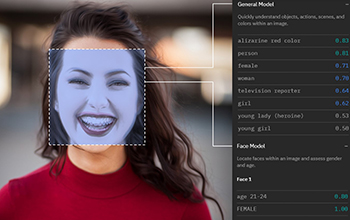
Press Statement 19-002
Grants from US, UK, Australia will fund next generation improvements to state-of-the-art gravitational wave detectors
February 14, 2019
The National Science Foundation (NSF) is awarding Caltech and MIT $20.4 million to upgrade the Laser Interferometer Gravitational-Wave Observatory (LIGO), building upon the agency’s four-decade investment, which has totaled more than $1 billion to date. Funded through a cooperative agreement, Advanced LIGO Plus will increase the volume of deep space the observatory can survey by as much as seven times. This investment is part of a joint international effort in collaboration with UK Research and Innovation and the Australian Research Council, which are contributing additional funds. Advanced LIGO Plus operations are expected to begin in 2024.
NSF Director France Córdova issued the following statement:
“This award ensures that the National Science Foundation’s twin LIGO observatories, which made the first historic detection of gravitational waves in 2015, will continue to lead in gravitational wave science for the next decade. With improvements to the detectors — which include techniques from quantum mechanics that refine laser light and new mirror coating technology — both of our observatories will significantly increase the number and strength of their detections. Advanced LIGO Plus will reveal gravity at its strongest and matter at its densest in some of the most extreme environments in the cosmos. These detections may reveal secrets from inside supernovae and teach us about extreme physics from the first seconds after the universe’s birth.”
UK Research and Innovation Chief Executive, Professor Sir Mark Walport, issued the following statement:
“In confirming the existence of gravitational waves, the LIGO project generated unique insights into the nature of our universe and fueled world-wide interest in science. This Nobel-winning project also illustrated the importance of international collaboration in research. The UK’s technological and scientific expertise will continue to play a crucial role in ALIGO+, which aims to further increase our understanding of the events that shape the universe. The UK investment in ALIGO+ and support for a third gravitational wave detector in India underlines UKRI’s commitment to developing existing collaborative research and innovation programs with partners.”
For more on what to expect from the upgraded LIGO detectors, see “LIGO: Looking Forward”, an interview with Rainer Weiss, Barry C. Barish and Kip S. Thorne. As recipients of the 2017 Nobel Prize in Physics for their work on the observatory, the three LIGO icons share an insider’s look into the extreme phenomena the observatory’s upgrades will reveal.
Visit UKRI for their full statement.
-NSF-
Laser Interferometer Gravitational-wave Observatory
NSF led the construction of the Laser Interferometer Gravitational-wave Observatory (LIGO) to detect gravitational waves — ripples in spacetime created by some of the most massive known objects in space. LIGO is an instrument so sensitive that, in 2015, the array detected the collision of two black holes 1.3 billion light years from Earth. LIGO is operated by Caltech and MIT, which conceived of LIGO and led the initial and Advanced LIGO projects. Financial support for the Advanced LIGO project was led by NSF with Germany (Max Planck Society), the U.K. (Science and Technology Facilities Council) and Australia (Australian Research Council) making significant commitments and contributions to the project. More than 1,200 scientists and some 100 institutions from around the world participate in the effort through the LIGO Scientific Collaboration, which includes the GEO Collaboration and the Australian collaboration OzGrav. Additional partners are listed at ligo.org/partners.php.
UK Research and Innovation
The Science and Technology Facilities Council is part of UK Research and Innovation (UKRI), a new body which works in partnership with universities, research organizations, businesses, charities and government to create the best possible environment for research and innovation to flourish. UKRI aims to maximize the contribution of each of our component parts, working individually and collectively. UKRI works with our many partners to benefit everyone through knowledge, talent and ideas. Operating across the whole of the UK with a combined budget of more than £7 billion, UKRI brings together the Arts and Humanities Research Council, Biotechnology and Biological Sciences Research Council, Engineering and Physical Sciences Research Council, Economic and Social Research Council, Innovate UK, Medical Research Council, Natural Environment Research Council, Research England, and Science and Technology Facilities Council. For more information visit stfc.ukri.org and ukri.org
Media Contacts
Joshua Chamot, NSF, 703-292-4489, email: jchamot@nsf.gov
Whitney Clavin, Caltech, (626) 395-1856, email: wclavin@caltech.edu
James Giles-Franklin, UK Research and Innovation (UKRI), +44 (0)1793 234170, email: james.giles-franklin@ukri.org
The U.S. National Science Foundation propels the nation forward by advancing fundamental research in all fields of science and engineering. NSF supports research and people by providing facilities, instruments and funding to support their ingenuity and sustain the U.S. as a global leader in research and innovation. With a fiscal year 2020 budget of $8.3 billion, NSF funds reach all 50 states through grants to nearly 2,000 colleges, universities and institutions. Each year, NSF receives more than 40,000 competitive proposals and makes about 11,000 new awards. Those awards include support for cooperative research with industry, Arctic and Antarctic research and operations, and U.S. participation in international scientific efforts.
![]() Get News Updates by Email
Get News Updates by Email
Connect with us online
NSF website: nsf.gov
NSF News: nsf.gov/news
For News Media: nsf.gov/news/newsroom
Statistics: nsf.gov/statistics/
Awards database: nsf.gov/awardsearch/
Follow us on social
Twitter: twitter.com/NSF and twitter.com/NSFspox
Facebook: facebook.com/US.NSF />
Instagram: instagram.com/nsfgov
Source: NSF News
Brought to you by China News






